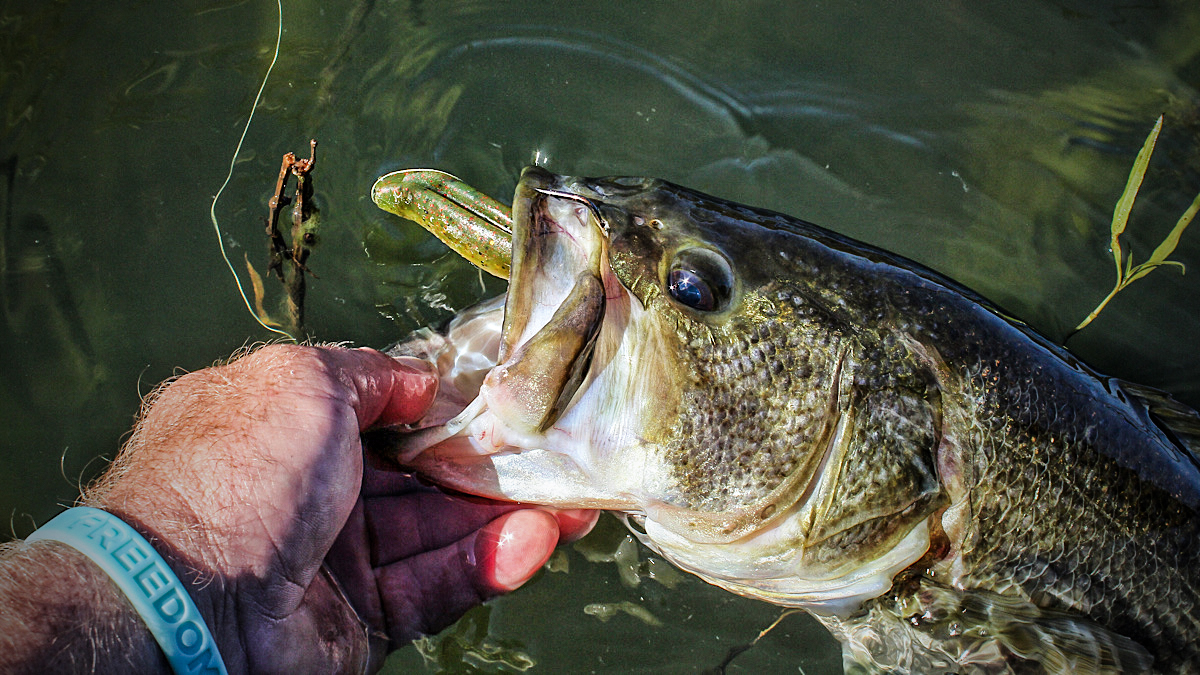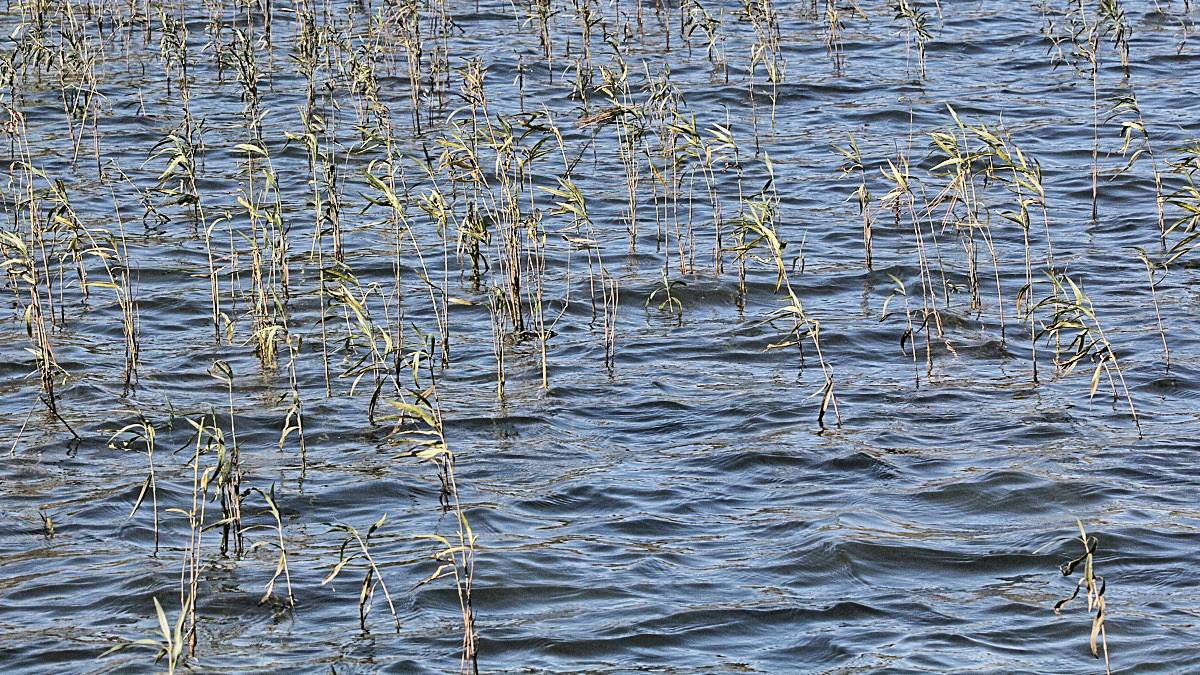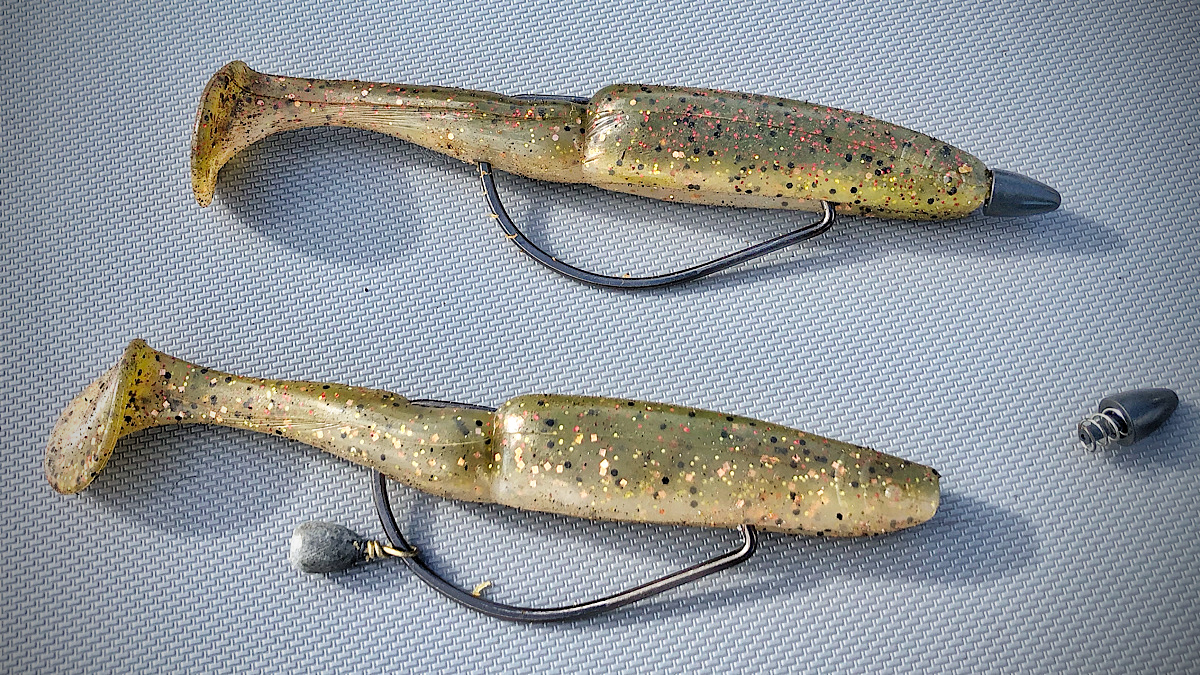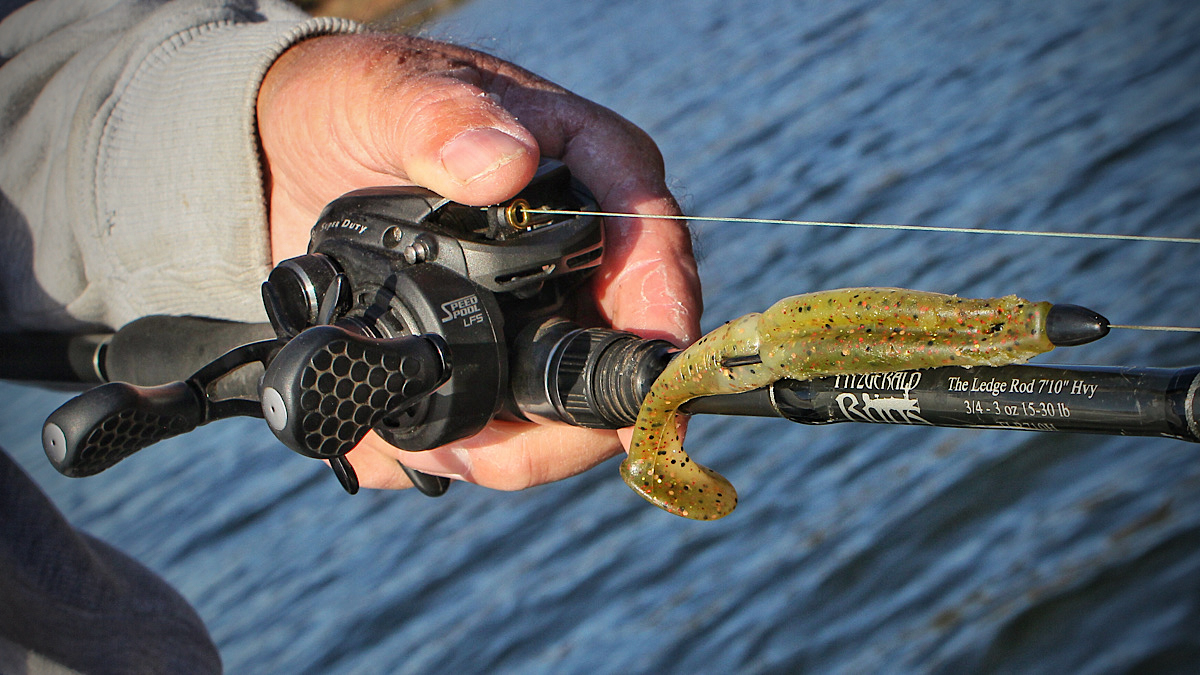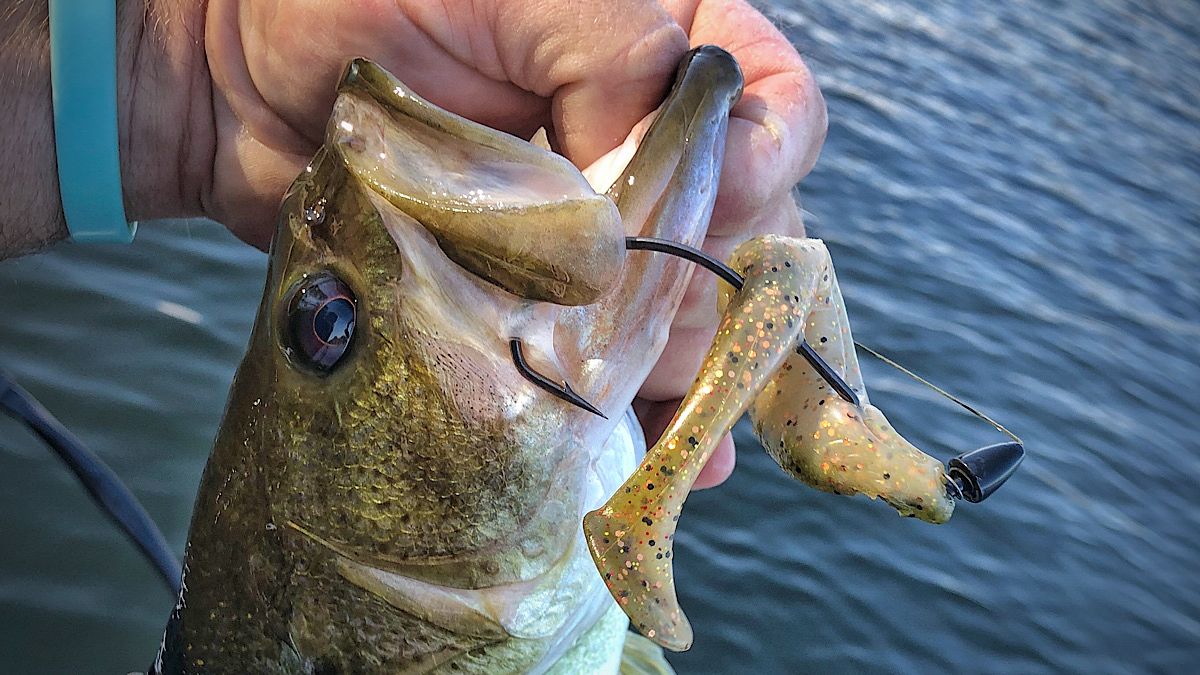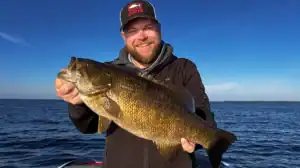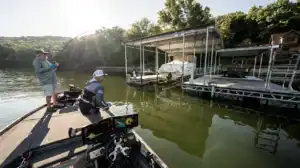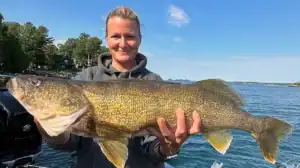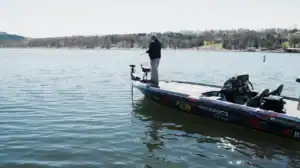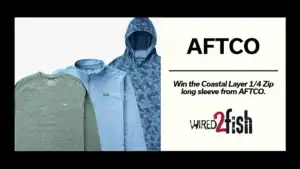Weedless soft-plastic swimbaits have long been staples for wintertime fishing in sunny south Florida. But over the last few years, I’ve found bass will still eat these baits around dead and dying vegetation deep into the winter a little further north as well. Now I’m not talking north as in the frozen tundra of the Great Lakes-type of north; but you can still get on a good bite with a swimbait like this every now and then all the way up around the Mason-Dixon Line through the fall and deeper into the winter a little further south.
The conditions have to be right, however. So today we’re going to look at what those perfect conditions entail, the gear you’ll want to use when fishing this way and the terminal tackle I prefer for this presentation as well. You can change things up a little to fit your particular situation but for me, this is what works best.
Ideal conditions
First and foremost, I only really fish this way when there’s a good bit of vegetation present. You could probably draw a strike every now and then fishing with these baits around docks and tree tops, but I would lean more towards something like a Megabass Magdraft or something similar rigged on fluorocarbon or monofilament in those situations.
Instead, when fishing with a weightless or belly weighted Texas-rigged soft-plastic swimbait, I’m looking for whatever vegetation is left that I can find. We’re talking lily pads, pad stems, water willow grass, coontail, milfoil, hydrilla or some other type of living vegetation or whatever’s left of it after it had gone dormant.
Then you’re going to need some sunshine, lots of it ideally. The sunshine will heat the water up a bit and more importantly, heat the cold-blooded bass up even more. Most of the year when I’m fishing a bait at or near the surface, I’m targeting shady areas but not in the winter. In the winter, sunshine is your friend and your best chance of drawing an aggressive strike. So if the water temps are down in the mid 50s or below and it’s cloudy, I’m not even entertaining this technique. But if the water is in the low 50s or even mid to upper 40s, I’ll give this a try as long as it’s sunny.
But you’ll also want one more variable to be in your favor if possible—a little wind. It doesn’t have to be blowing 20 mph and in fact, it’s better if it’s not. A nice little breeze is ideal for really taking this bite to the next level. These three conditions are lined out in order: Vegetation is the most important, sunshine is second and if you can get a little breeze… all the better.
Bait and terminal tackle
This type of swimbait fishing is synonymous with one bait in particular, a Reaction Innovations Skinny Dipper. This was one of the first baits to be fished this way over a decade ago and most anglers now refer to this technique as throwing a Skinny Dipper regardless of the brand of the actual bait they’re using. This tendency is similar to the way people refer to all soft-plastic jerkbaits as Flukes since the Zoom Super Fluke was the trendsetter of that genre of bait.
I’m a big fan of the Skinny Dipper as well but have leaned more towards the larger Gambler Big EZ that I have rigged here in recent years. It’s a larger bait so I’m able to throw it farther and it seems to draw just a little bigger bite for me. The latter part of that statement is likely more of a confidence thing than rooted in fact but regardless, this is the bait that’s found its way into my hand time and time again when I’m looking for a big bite.
Since this bait is pretty big though, you’ll need a comparable hook to go with it. I typically use either a 6/0 or even a 7/0 extra wide gap hook with this bait and I’ve had great success with both the Gamakatsu EWG Monster Hook and the VMC Heavy Duty Wide Gap Hook for this presentation.
If you want to back down to the smaller Skinny Dipper, a 5/0 EWG hook is plenty big enough. I also typically rig this bait weightless, especially this time of year because I want to fish the bait a little slower and don’t want it to fall fast. But if the vegetation is still a little thick, you can add a weight to your bait by using a belly weighted EWG hook or hanging a bell weight on the hook shaft, which I personally prefer because it tucks up near the tail of the bait on the retrieve and tightens up the wobble a bit.
What appears to be a bullet weight here in these pictures is actually a screw-lock plastic cone that is nearly weightless. It’s used to make the bait a little more streamline and thus help it shed vegetation, while also preventing the vegetation and line from regularly damaging the nose of my soft-plastic bait. The hard plastic tube inside of the screw lock keeps my braid from tearing the head of the baits as I snatch the bait free from cover and also set into and fight fish. I bought a jumbo pack of these specific nose cones years ago and I can’t for the life of me remember the name brand, but Gambler Hollow Points are really similar and will serve the same purpose.
Rod, reel and line
The gear you use is super important with this technique. In my opinion, there is no other option other than braided line. If you’re fishing this technique around vegetation and are using monofilament or fluorocarbon, you may get a few fish out of the vegetation but you’re setting yourself up for heartbreak when a big one buries you up. I personally like 50- to 65-pound Sufix 832 Braid but you can get by with 40-pound test if the vegetation is sparse and your chances of a true giant are slim. Still though, I wouldn’t risk it since the vegetation masks the braided line well and you’re really not gaining much by decreasing your line size.
I also believe this presentation calls for a big rod and a heavy-duty reel. For me personally, that looks like a Lew’s Super Duty Speed Spool in 7.5:1 gear ratio and a 7-foot, 10-inch heavy-action Fitzgerald Ledge Rod. Again, you can get away with a smaller rod and reel sometimes, same as you can lighter line. But when a big bite comes, you’re going to want to be ready for battle. The length of this rod and deep spool of this reel also both aid in making longer casts, which greatly increases your chances of catching fish when throwing way back in cover or paralleling a grass edge out in front of the boat.
In conclusion
If you’ve ever fished with a Skinny Dipper or similar bait down in Florida, there’s not a ton of difference between that technique and what I’m talking about doing here. For me personally, all of the gear is the same as well as the terminal tackle and bait selection. The main difference is the necessity fo the right conditions. Which really, the same conditions are critical in south Florida, you just see them a lot more regularly down that way in the winter.
But for those of you who have never had the privilege to fish this way down south, I don’t want you to relegate this technique to that one specific geographic location. I made the mistake of doing that for years myself and that’s really the main purpose of this piece. Yes, I want to educate you on the ins and outs of this technique. But more importantly, I want to make sure you realize this type of fishing is available to you. No, you won’t be able to fish this way in north Alabama during a snowstorm in December. But let a couple of those sunny 70-degree days stack up and you’ll be shocked how aggressive a bass in shallow vegetation can be in the dead of winter.
Just look for those ideal conditions: sunny skies, a little wind and whatever’s left of the vegetation in your local water way. Make sure you have a swimbait rigged up that you have confidence in and make sure it’s attached to the gear you’ll need to pull a big one out if and when that one special bite comes. You won’t catch a lot of fish this way but I personally would rather have one bite on this bait than two dozen on a Ned rig… most of the time.
I don’t have anything against getting a bunch of bites either. But there’s just something hopeful about a big one boiling up on a swimbait out of the grass in the wintertime that helps me hang onto my sanity just a few more months until it’s a much more common occurrence again.
